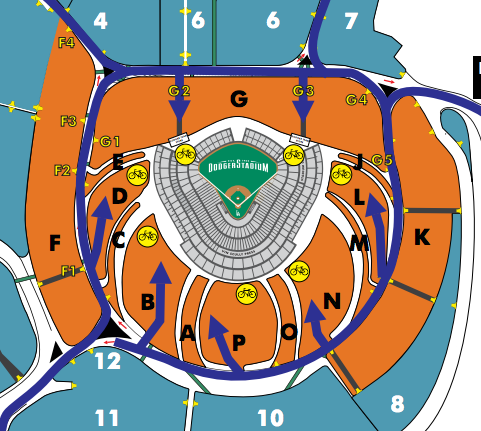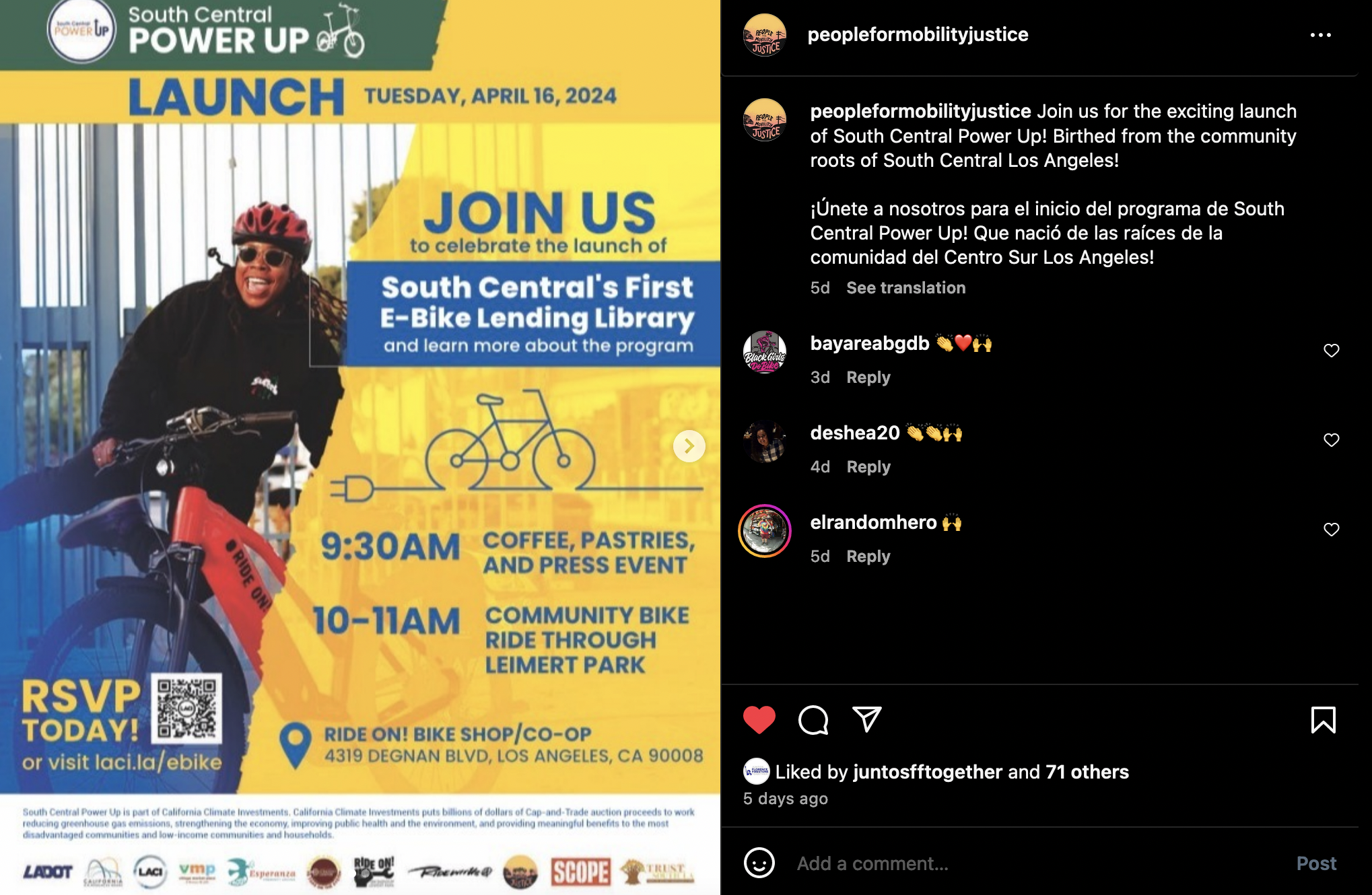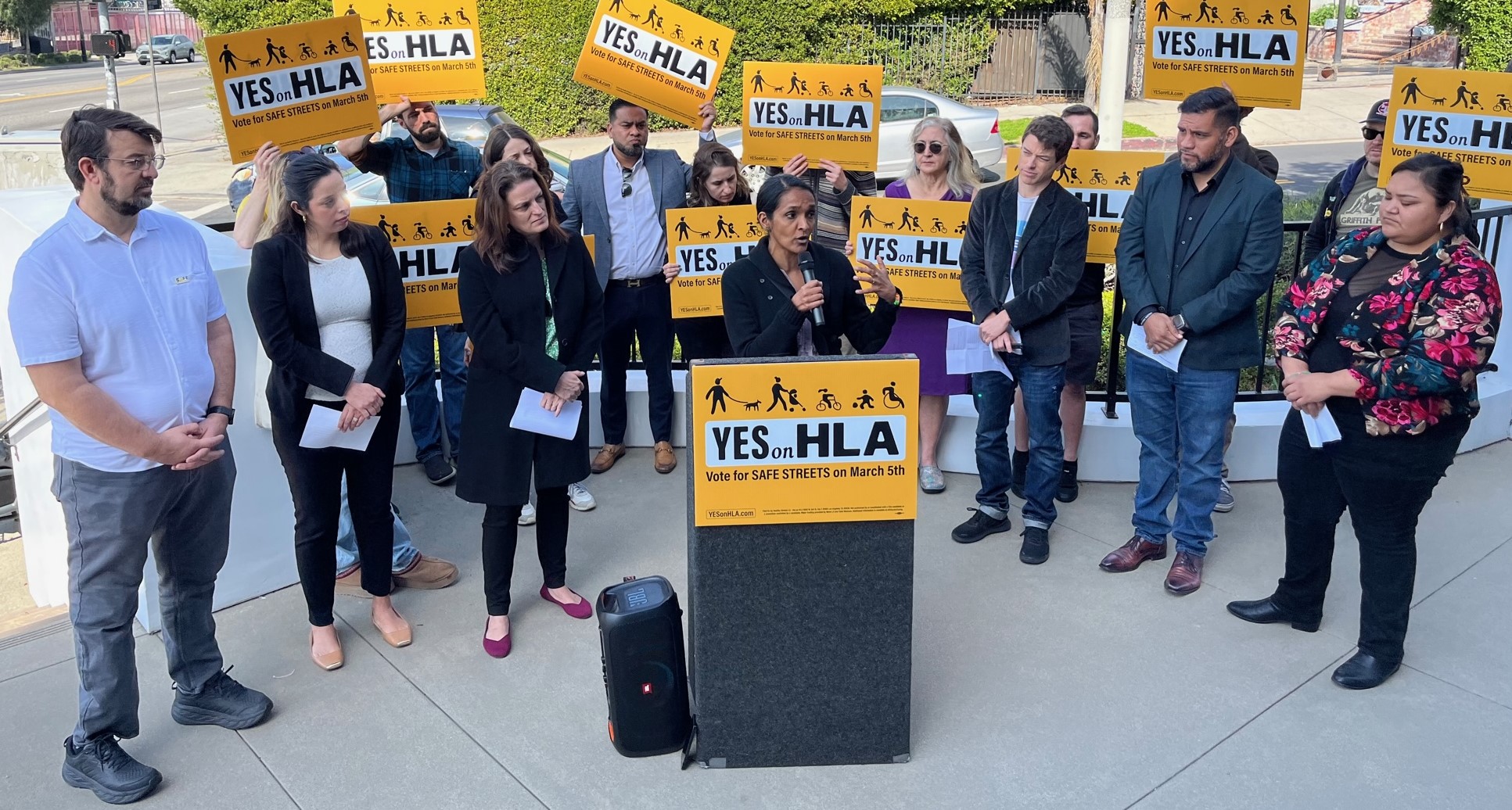Dodgers Have a Winning Season Promoting Transportation Options
8:18 AM PDT on October 11, 2013

The irony was obvious.
The only professional sports team named for a mode of transit also played in the most car-dependent stadium in the country. When the Brooklyn Grays changed their name to the Trolley Dodgers, it was a reference to the trolley lines surrounding Ebbets Field. When the Dodgers moved to Los Angeles, the trolleys were already partially gone from city streets and the stadium was surrounded by a sea of asphalt. (Note: there's a great comment by Militant Angeleno on the history of the trolley lines and the Dodgers name below.)
When Streetsblog arrived in 2008, I was shocked by how bad conditions were. Routes to the stadium completely lacked sidewalks, staff seemed confused when asked about bicycle parking, and the transit options dropped off riders at least a half mile away from the stadium.
Nobody is going to confuse Chavez Ravine with stadiums in San Francisco and Atlanta with large bike valets nor ones in New York or Chicago served by heavy rail; but the 2013 Dodgers are different and better than the 2008 Dodgers in many important ways outside the stadium and away from the parking lot. No matter what happens on the field against the St. Louis Cardinals over the next week, non-car dependent Dodgers fans were big winners this season.
While the recent announcement of free parking for carpools with at least four passengers is encouraging, the biggest improvements came for bus and bike riders seeking access to Dodger Stadium.
Elson Trinidad, a community activist, bike rider, musician and member of the Dodgers citizen advisory committee from 2005-2012 credits the sale of the Dodgers from Frank McCourt to Guggenheim Partners.
"We had a meeting in July 2012 with new President/CEO Stan Kasten, I saw that as an opportunity to give some real input, and I personally gave him some ideas on improving bike and transit access to the stadium..." Trinidad explains. "...among them were a bus-only lane and better bicycle racks placed around the stadium, near gate entrances. Both came to fruition albeit in the limited sense. The bus-only lane I envisioned was inside the parking lot so Dodger Stadium Express buses wouldn't have to be hampered by the sea of cars leaving the lot. And there are small-capacity "Hoop" style bike racks near some of the entrances now, though I always see them filled to capacity."
According to the Dodgers press office, racks are available at seven places around the stadium. In 2008, a single bike area existed near the south portion of the stadium where one could chain their bike on security gates that also served as the smoking area. Security were untrained on the location of the racks and the only map that existed was made by Streetsblog.
Not a massive bike valet, but the racks are certainly a major step in the right direction.
The Dodgers have done more than just put out some racks. Officials worked with bicycle groups Cyclists Inciting Change Through Live Exchange (CICLE) and the Eastside Bike Club to program "Dodgertown Rides." Over 100 cyclists attended the first ride this summer and were greeted with expanded bike parking. The ride created good feelings with cyclists, many of whom were already Dodgers enthusiasts,
"It was an amazing experience showing a hundred bicyclists how to ride from Union Station to Dodger Stadium," remembers CICLE's executive director, Dan Dabek. "The May 2013 ride was a partnership between Metro, C.I.C.L.E. and the Eastside Bike Club. The Dodgers staff was very accommodating to our group and demonstrated their commitment to bicycling as a way to reach the stadium. Hall of Famer, Tommy Lasorda welcomed our group at the top of Chavez Ravine and Carlos Morales, from the Eastside Bike Club, and I got to promote bicycle transportation to the whole stadium during an interview on the jumbotron."
The Dodgers change of heart towards transit riders is just as dramatic. In 2008 and 2009 the Dodgers seemed almost annoyed by a Metro program that provided free bus rides from Union Station to Dodger Stadium. Without the aid of Supervisor Mike Antonovich, who sits on the Metro Board of Directors and does not represent the area surrounding the stadium in the County Board of Supervisors, and then Mayor Antonio Villaraigosa, the Dodger Stadium Express (formerly just called the Dodger Shuttle) never would have happened and/or would have been cancelled after the first (successful) season.
And the Dodgers didn't seem to care. Team owner Frank McCourt scoffed at the "few buses" that provided access to his stadium at no cost to the team. When he vowed to not lift a finger to help the shuttle, an outraged Bill Rosendahl, the then-City Council Transportation Committee Chair and east-coast transplant who could claim to be both a Brooklyn and Los Angeles Dodgers fan, scolded the recalcitrant owner during a public hearing.
Metro still provides the shuttle as a free service, with funding coming from a County slush fund. However, in-stadium promotion for the shuttle has dramatically increased and the Dodgers offer promotions and discounts to fans who arrive to the game by transit. The public has responded by choosing to Go Metro in record breaking numbers every season since the service was introduced.
Is it the Mets' award-winning "Take the Train to the Game" promotion? No, it isn't. Is it a step in the right direction? Yes.
But Trinidad wants to see more from the Dodgers to make the bus trip to the stadium a better one.
"I personally take the bus most often for games these days, as even the lower parking cost isn't worth it due to the slow-moving post-game traffic," Trinidad continues. "I haven't driven to the game in maybe 3 or 4 seasons. I take the Dodger Stadium Express most of the time, and would like to see the stretch between Alameda and Figueroa coned off. I would like to see the Dodgers open the Scott Ave gate for Dodger Stadium Express buses only and have a bus-only lane within the parking lot to facilitate bus ingress and egress. I can leave the game quicker by walking down the hill to Sunset and taking the Line 4 bus home."
But pedestrian access is one area where the team has yet to make headway. Broken (or non-existent) sidewalks surround the property, and navigating through the parking lot feels perilous even if you happen to be wearing a Dodgers jersey. Dedicated pedestrian areas in every lot leading to the stadium would be a start. Working with the city to provide better sidewalks leading to the stadium would be a great step 2.
But organizationally, the team made strides in 2013, and we're not just talking about the amazing comeback on the field that landed them in the postseason. But just as many people won't remember this season without a World Series win, the strides towards a multi-modal Dodger Stadium will be forgotten if momentum stops with solid promotion, group bike rides, ticket discounts and some new bicycle racks.
Stay in touch
Sign up for our free newsletter
More from Streetsblog Los Angeles
Metro Looks to Approve Torrance C Line Extension Alignment
Selecting the relatively low-cost hybrid alternative should help the oft-delayed South Bay C Line extension move a step closer to reality
This Week In Livable Streets
CicLAvia returns to Venice Boulevard, Metro board committees, L.A. City Council Transportation Committee, Metro budget theater, and more





